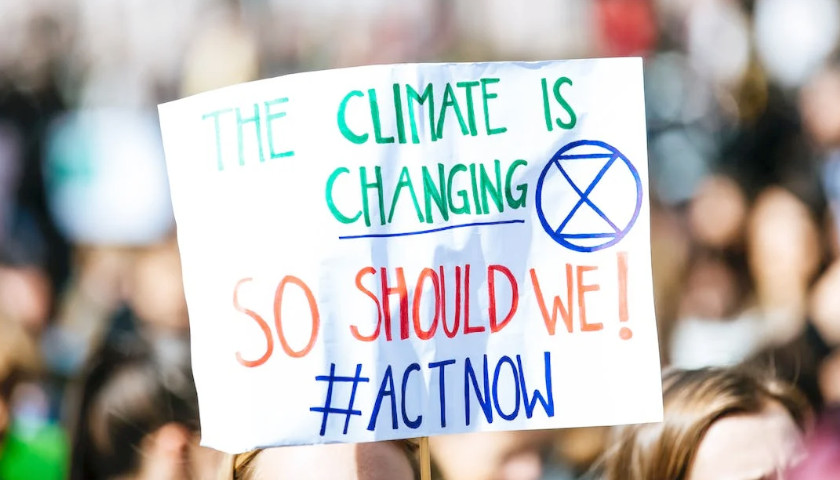by Gary Anderson
Out of sheer perversity, I follow stories in the Washington Post related to weather. It matters not what the weather brings, the cause is global warming (or climate change depending on the temperature of the disaster). Having a flood? Global warming. Got a heavy snow or ice storm? Climate change. They haven’t yet figured out how to blame earthquakes on global warming, but the mainstream media will probably find a cause and effect relationship somehow.
What gets short shrift in the Post are the effects of green technologies on the animal population. One largely has to consult local news outlets for the concerns of real people. In the Upstate New York rural area where I spend the spring and summer, there are frequent stories about birds being killed by wind farms and images of insects — particularly butterflies — and birds killed by the reflection of acres of ugly solar panels that deface the countryside. There are also questions of loss of farm acreage and pollination sites for honeybees and butterflies. At some point, we need to ask ourselves if it profits us to save our planet and lose its flora and fauna that make it sustainable? These are issues that grab the attention of real people.
Climate change science is becoming a state-run industry just as detecting witches was before the Enlightenment. Eradicating the threat of witchcraft became the “scientific” endeavor with many charlatans. Hypnotizing the chickens among the crowned heads of Europe. Scientists who dare to show skepticism regarding climate change were branded as heretics. Today, climate change fanatics do not burn heretics, they discredit them. Take for example the case of Dr. John Clauser, who won the Nobel Prize in Physics for his work on light particles. Many of his colleagues have turned on him for questioning the conventional wisdom behind the cult of climate change. He is skeptical regarding the qualifications of others in the physics field who build the models predicting global Armageddon in decades, if not sooner. Most scientists go with the flow; the great ones ask questions.
Dr. Clauser is not alone here. People across the political spectrum are concerned that the green movement is going too fast or going in the wrong direction. Many of my California friends are so appalled at their governor’s push to stop selling petroleum powered cars by 2035 that they believe it to be the issue that could turn the state red in 2024. Many middle class Americans outside California are horrified at the prospect of eventually being forced to buy overpriced, rolling firetraps for which there is no nation-wide refueling infrastructure. Even many of those who believe that there is too much CO2 question whether there might not be a better way to reduce it by carbon capture and carbon scrubbing rather than to destroy the entire petrochemical industry putting millions out of work with a very dubious return on investment.
What we have here is a very powerful potential voting bloc. Stopping or slowing down the green movement is one of the few things that both MAGA and moderate conservatives can agree on, and they are not alone. People who are concerned with the bird and pollinator insect population — and I am one of them — reach across the political spectrum, and many are swing voters. Lower-income black and Latino voters, who lean Democrat, should be concerned about being priced out of the car market by electric vehicles.
To date, liberals, progressives, and the mainstream media have seized the high ground on environmental issues. Conservatives, Republicans, and thinking moderates need to counterattack and insert some common sense initiatives into the next election. If the Republicans are smart — and they often are not — they will make this a part of their 2024 platform.
What should such a platform look like? First, there is one thing it should not portray. Blanket climate change denial is a sure loser. The mainstream media, NPR,and PBS are all in, and the true believers have made much of the public so frightened of impending Armageddon that any contrary arguments will get lost in the weeds. Any platform should call for an immediate halt to federal subsidies for solar and wind farm development until an environmental impact study is done to determine the effect on animal and plant life.
Second, a moratorium should be put on federal funds for all-electric vehicle development to determine the economic feasibility of building a nation-wide network of charging stations as opposed to encouraging more production of hybrid vehicles.
To date, Americans have been pounded with the threat of a crisis that is probably not existential. We are presented with only one set of potential solutions that may or may not work. The next Republican platform should present voters with viable alternative choices. Imagine a Republican version of the infamous 1964 Democrat “Daisy” ad with images of dead butterflies on solar panels, dead birds under a wind farm tower, and a dad and daughter caught in a snow storm with the tag line; “there are alternatives.”
The outcome of the 2024 presidential race is an unknown, but control of the Congress will be vital. This is an issue where local and state races will be the center of gravity. If we get the environment wrong in this decade, we will be big losers by 2050.
– – –
Gary Anderson was Chief of Staff of the Marine Corps Warfighting Lab and is active in local environmental issues in Upstate New York.








